
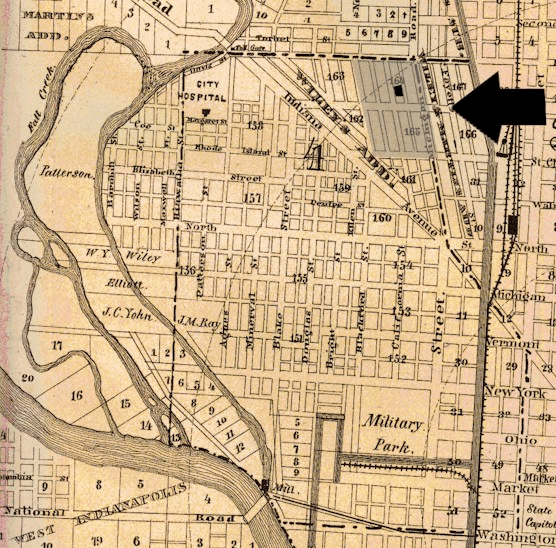 |
The home at the lot now numbered 903 North
California was built around 1875-1880, and in 1880 the family of Mike
Taylor and wife Jennie were living there. The Taylors were both born in
Ohio but had a ten-year-old daughter born in Indiana, so they apparently
had been in the state since at least 1870. Their home was a single-story
frame home, though with a rear extension it was the most spacious of the
three structures in the project area. Mike Taylor was a tinner, but his
family moved from 903 by 1883, when they were living on what is now 10th
Street. Between 1883 and 1885, Michael F. Brown and his wife Mary had
moved into the Taylors' former home at 903 North California with son
William, daughter Mary and Michael's brother-in-law John Hurley. The
Browns remained at 903 until 1910, lording over a series of improvements
to the structure. By 1898, for instance, the home appears on a
Sanborn Insurance map with a wrap-around porch and had been extended
upward another half-story in its main block.
Like the Taylors, most of the earliest project area residents were recent arrivals to Indiana; the Taylors, for instance, were both born in Ohio, and their neighbors at 909 North California, carpenter John Carricoe and wife Rosalind, were born in Kentucky and Ohio respectively. Like the Taylors, the Carricoes moved by 1883, suggesting that at least some of the project area’s earliest residents were relatively mobile newcomers. However, subsequent residents Michael and Mary Brown would live at 903 North California from about 1883 until 1910, and their neighbor John Blackwell lived at 913 North California from 1893 until 1903.
|
| Above: In 1870, most of the near-Westside's streetscape had been laid out, though the creeks continued to fan out all over what is now the IUPUI campus. Ransom Place's contemporary boundaries are shaded in the upper right, with the project area identified as the dark block. |
| Quite a few of these earliest residents traced
their parentage outside Indiana, if not outside the United States. Mike
and Jennie Taylor were born in Illinois and Indiana respectively, but
their parents were born in Ireland. Rosalind Carricoe's mother was born in
England; because Rosalind was born in Ohio in 1850, her mother obviously
had migrated before mid-century. Michael and Mary Brown's 1900 lodger John
Murphy was born in Indiana, but like the Browns his parents were also born
in Ireland. The north side of the double at 907-909 also was home to
several families who had recently migrated. Anna Young, a servant boarding
at 909 North California in 1900, had a father born in Ireland and a mother
born in England. Perhaps the most unusual genealogy among these earliest
residents was for Mary Middleton, who was born in Ireland in 1840 and was
living in the double at 907 in 1910. Both of Middleton's parents were born
in Canada. While many of the project area’s residents could claim Irish
heritage, Middleton (born 1840) and neighbor John J. Hamilton (born 1856)
were the only residents of the project area who were actually born in
Ireland.
|
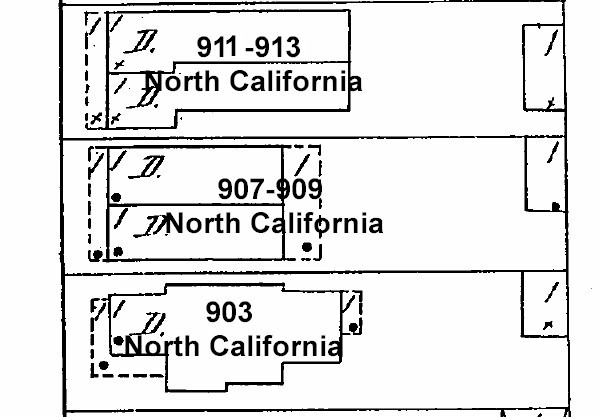 |
| Above: In 1914, the three homes in the project area looked much as they would until they were demolished in the 1980s. In 1956 (below), the homes looked much the same but the outbuildings had all been removed except for the new garage at 911-913 |
| The home at 913 North California was divided into a double between 1900 and 1910. Between 1903 and 1910 Virgil and Mary Robinson moved into the newly divided double at 913 North California, becoming the project area's first African-American residents. Some near-Westside neighborhoods would remain White Hoosier as much as a half-century later, but the neighborhoods closest to Indiana Avenue and in Ransom Place shifted quite rapidly beginning about 1900. By the early twentieth century, the community along Indiana Avenue was the city's central Black community and the surrounding streets became home to many African Americans. Most of these earliest Black arrivals from the Upper South moved into the neighborhoods along Indiana Avenue, and later arrivals into the Depression moved into neighborhoods south of Ransom Place across what is now the IUPUI campus. | 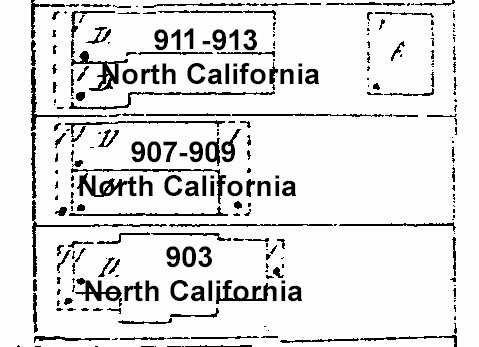 |
The 900 block of California Street remained among the last string of homes in Ransom Place with mostly White residents, but these Whites almost all left after 1910. By 1920 the demographic transformation of Ransom Place was complete. For instance, the 13 households on the east side of California Street’s 900 block (i.e., including the project area) included just two White families: 69-year-old German immigrant Henry Falk was living alone at 941 North California, and Arba and Hotsa Whitlatch were living at 901 North California. The Whitlatchs were running a grocery store in a still-standing building at the northeast corner of California and Ninth Streets.
| Right (thumbnails): the first weeks of field school |        |
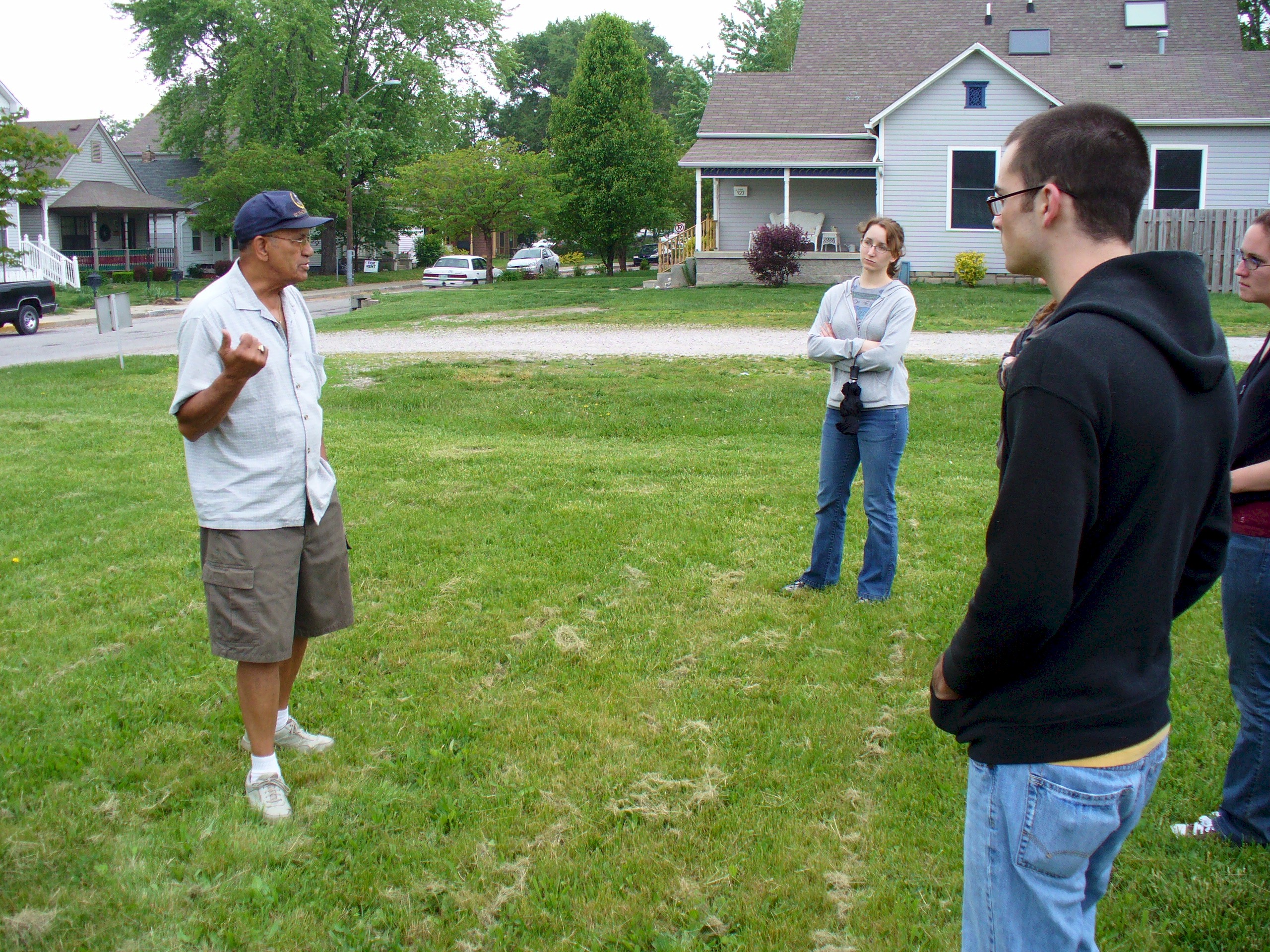 |
The new homeowners were typical of the residents that were emerging along
California Street by 1920. Of the 11 Black households on the east side of
California Street, there were 29 adult residents, and most came from outside Indiana: 10 were from
Kentucky, 8 were from Indiana, five were from Tennessee, two were from Ohio, and
there were single examples of residents born in Pennsylvania, Virginia, Alabama,
and Missouri. This predominance of migrants from the Upper South is relatively
typical of migration patterns into the near-Westside in the first quarter of the
twentieth century. Relatively few residents came from the Deep South.
The homeowners along California Street included several professionals, almost all of whom lived in the 800 block: lawyers James H. Lott and Freeman Ransom, physicians Henry Hummons (who was one of the organizers of the Senate Avenue YMCA in 1900) and Joseph Henry Ward, and teacher Milton Stevenson all lived in the 800 block. Entrepreneurs including caterers and barbers lived in surrounding blocks, many of whom established quite lucrative businesses, but the neighborhood was still predominately working-class renters in 1920 and appears to have always remained so. |
| Above: Resident Thomas Ridley gives the field school a tour of Ransom Place starting here at the California Street site. |
African Americans found their way to Indianapolis beginning in the 1830s, and a significant migration wave delivered many African Americans to Indianapolis following the Civil War. Living in 913 North California in 1910, Virgil Robinson's parents likely were among one of these early migrations, since the janitor was born in Indiana in 1880 to a Tennessee-born father and Missouri-born mother; Virgil's wife Mamie hailed from Kentucky, the most common origination point for African Americans migrating to Indianapolis. The Robinsons moved out between 1914 and 1920, and the family in their home in 1920, Luther and Irene Porter, traced three of their four parents to Kentucky (with Luther's dad born in Alabama); the 25-year-old Luther was born in Kentucky himself. The household at 903 North California in 1920 was headed by Reuben and Sally Jones, who were born in Kentucky in 1842 and 1852 respectively and had apparently been in Indiana for quite a while before they arrived on California Street. The Jones' oldest daughter and son were each born in Kentucky in 1883 and 1885; their daughter Justine was born in Indiana in 1892, which suggests that they made their way into Indiana if not Indianapolis between 1885 and 1892, about a decade before the Great Migration began sending African Americans into cities like Indianapolis.
Like most of their neighbors in the 900 block the Jones were renters; neither Reuben nor Sally could read or write, but several of their neighbors in 1920 were well-educated or ambitious entrepreneurs. For instance, Rutherford B. Hayes Smith at 907 North California was a lawyer born in Pennsylvania in 1878. His neighbor at 903 included David Black, Reuben and Sallie Jones' foster son, who was a tailor. Those needing alterations also could turn to Everett Smith, who lived at 911 after 1925 and ran a tailor shop on Indiana Avenue that he later moved to Senate Avenue and then West Street. In 1920 Rutherford Smith and his wife Carrie shared their double with Frank and Irene Page at 909 North California, and Frank worked for the railroad and Irene was a servant. Robert Day, who lived at 913 North California, was a sand mixer, Clinton Hobb was a porter, and Ida Forte became a maid after husband Emmett died in 1931.
| Right (thumbnails): The first few days of excavation included visits from neighbors (left), screening (middle), and happy troweling (right). |    |
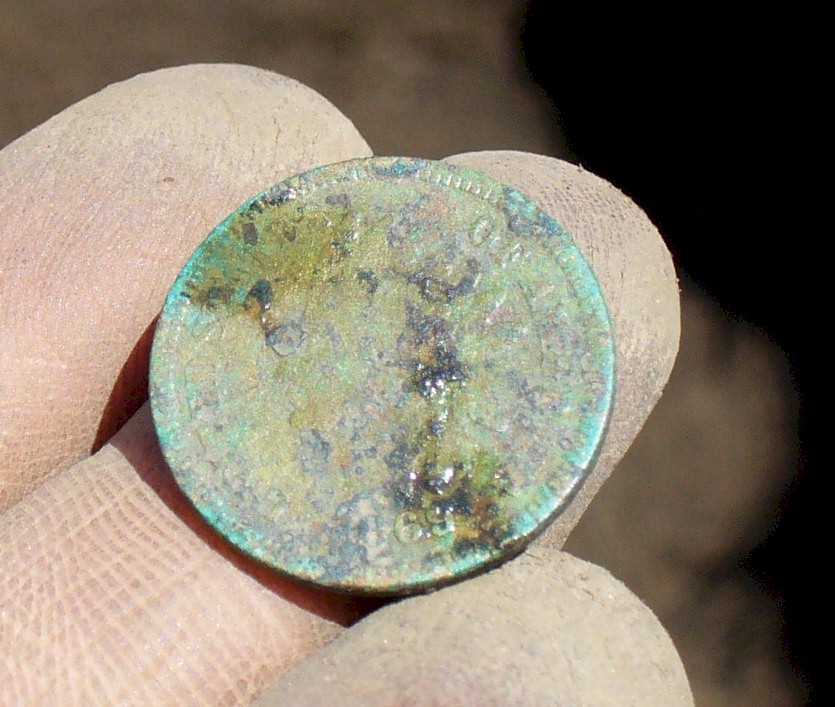 |
Left: Excavations have just gotten started, but one of the first units produced this corroded 1869 Indian Head penny. |
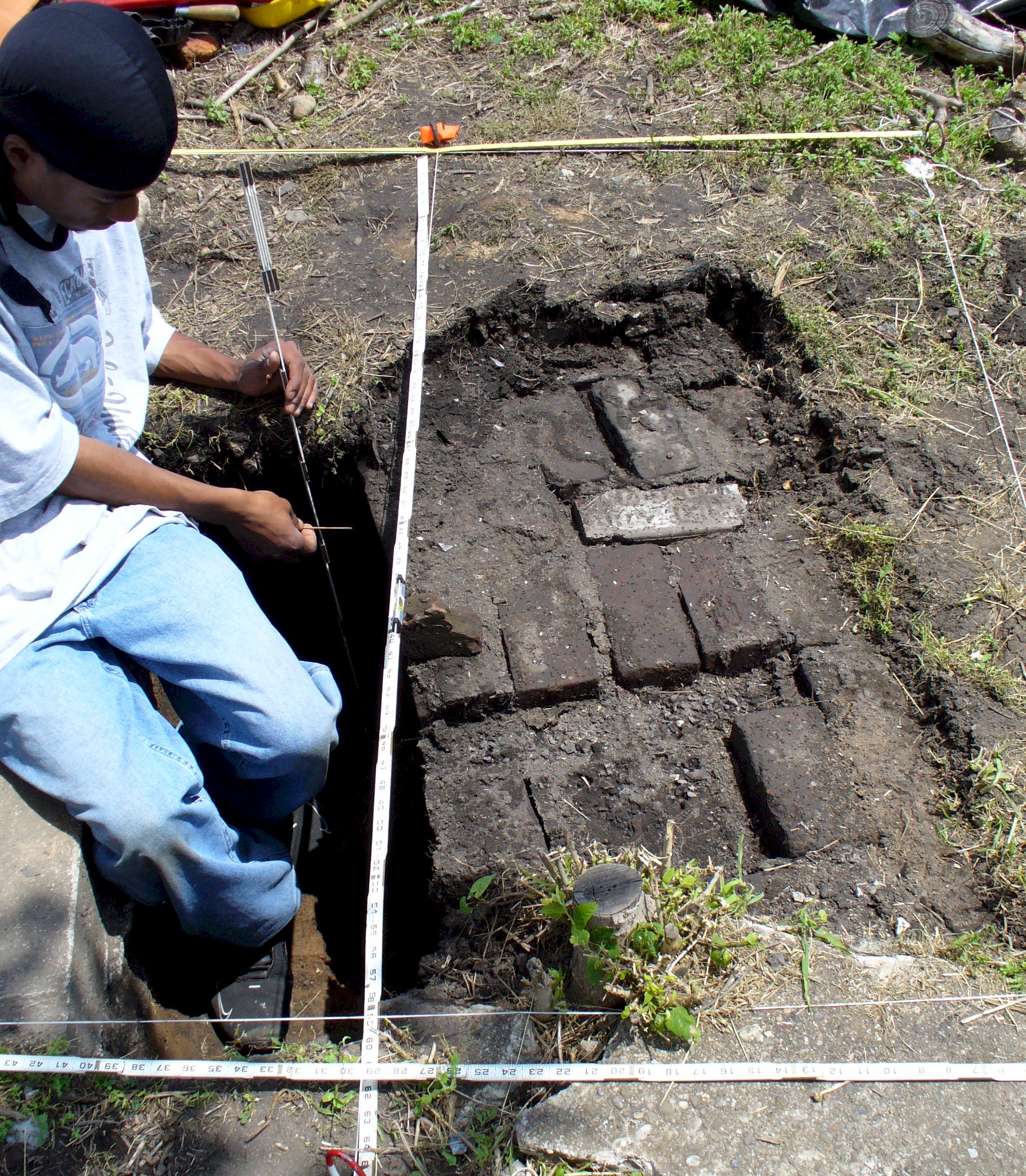 As excavations proceed, this page will include more
pictures of the dig, excavators, and artifacts.
Click here for the
June 10, 2006 Field School report. As excavations proceed, this page will include more
pictures of the dig, excavators, and artifacts.
Click here for the
June 10, 2006 Field School report.
For more information email me or drop by the site in the 900 block of California Street 8:30-3:00 weekdays through June 21st. |
Last updated June 10, 2006, 2006